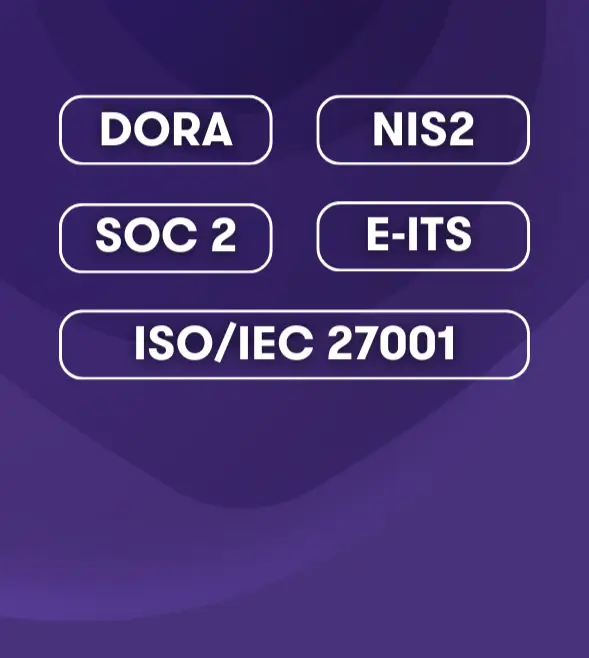-
Other audit services
We help clients with the application and use of foreign financial aid of EU and other funds and help prepare financial reports.
-
Audit calculator
The calculator will answer if the company's sales revenue, assets or number of employees exceed the limit of an inspection or audit.
-
Payroll and related services
We perform payroll accounting for companies whether they employ a few or hundreds of employees.
-
Tax accounting
Grant Thornton Baltic's experienced tax specialists support accountants and offer reasonable and practical solutions.
-
Reporting
We prepare annual reports in a timely manner. We help to prepare management reports and various mandatory reports.
-
Consolidation of financial statements
Our experienced accountants and advisors help you prepare consolidation tables and make the consolidation process more efficient.
-
Consultancy and temporary staff
Our experienced specialists advise on more complex accounting transactions, rectify poor historic accounting, and offer the temporary replacement of an accountant.
-
Outsourced CFO service
Our CFO service is suitable for companies of all sizes and in all industries. We offer services to our clients in the required amount and competences.
-
Assessment of accounting processes
We help companies to implement accounting practices that are in compliance with local and international standards.
-
Accounting services for small businesses
We offer affordable service for small businesses. We help organize processes as smartly and cost-effectively as possible.
-
Cryptocurrency accounting
We keep up with blockchain technology to serve and advise crypto companies. We are supported by a network of colleagues in 130 countries.
-
Trainings and seminars
Our accountants have experience in all matters related to accounting and reporting. We offer our clients professional training according to their needs.

-
Business advisory
We offer legal support to both start-ups and expanding companies, making sure that all legal steps are well thought out in detail.
-
Fintech advisory
Our specialists advise payment institutions, virtual currency service providers and financial institutions.
-
Corporate advisory
We advise on legal, tax and financial matters necessary for better management of the company's legal or organizational structure.
-
Transaction advisory
We provide advice in all aspects of the transaction process.
-
Legal due diligence
We thoroughly analyze the internal documents, legal relations, and business compliance of the company to be merged or acquired.
-
In-house lawyer service
The service is intended for entrepreneurs who are looking for a reliable partner to solve the company's day-to-day legal issues.
-
The contact person service
We offer a contact person service to Estonian companies with a board located abroad.
-
Training
We organize both public trainings and tailor made trainings ordered by clients on current legal and tax issues.
-
Whistleblower channel
At Grant Thornton Baltic, we believe that a well-designed and effective reporting channel is an efficient way of achieving trustworthiness.

-
Business model or strategy renewal
In order to be successful, every company, regardless of the size of the organization, must have a clear strategy, ie know where the whole team is heading.
-
Marketing and brand strategy; creation and updating of the client management system
We support you in updating your marketing and brand strategy and customer management system, so that you can adapt in this time of rapid changes.
-
Coaching and development support
A good organizational culture is like a trump card for a company. We guide you how to collect trump cards!
-
Digital services
Today, the question is not whether to digitize, but how to do it. We help you develop and implement smart digital solutions.
-
Sales organisation development
Our mission is to improve our customers' business results by choosing the right focuses and providing a clear and systematic path to a solution.
-
Business plan development
A good business plan is a guide and management tool for an entrepreneur, a source of information for financial institutions and potential investors to make financial decisions.
-
Due diligence
We perform due diligence so that investors can get a thorough overview of the company before the planned purchase transaction.
-
Mergers and acquisitions
We provide advice in all aspects of the transaction process.
-
Valuation services
We estimate the company's market value, asset value and other asset groups based on internationally accepted methodology.
-
Forensic expert services
Our experienced, nationally recognized forensic experts provide assessments in the economic and financial field.
-
Business plans and financial forecasts
The lack of planning and control of cash resources is the reason often given for the failure of many businesses. We help you prepare proper forecasts to reduce business risks.
-
Outsourced CFO service
Our CFO service is suitable for companies of all sizes and in all industries. We offer services to our clients in the required amount and competences.
-
Reorganization
Our experienced reorganizers offer ways to overcome the company's economic difficulties and restore liquidity in order to manage sustainably in the future.
-
Restructuring and reorganisation
We offer individual complete solutions for reorganizing the structure of companies.
-
Corporate taxation
We advise on all matters related to corporate taxation.
-
Value added tax and other indirect taxes
We have extensive knowledge in the field of VAT, excise duties and customs, both on the national and international level.
-
International taxation
We advise on foreign tax systems and international tax regulations, including the requirements of cross-border reporting.
-
Transfer pricing
We help plan and document all aspects of a company's transfer pricing strategy.
-
Taxation of transactions
We plan the tax consequences of a company's acquisition, transfer, refinancing, restructuring, and listing of bonds or shares.
-
Taxation of employees in cross-border operations
An employee of an Estonian company abroad and an employee of a foreign company in Estonia - we advise on tax rules.
-
Tax risk audit
We perform a risk audit that helps diagnose and limit tax risks and optimize tax obligations.
-
Representing the client in Tax Board
We prevent tax problems and ensure smooth communication with the Tax and Customs Board.
-
Taxation of private individuals
We advise individuals on personal income taxation issues and, represent the client in communication with the Tax and Customs Board.
-
Pan-Baltic tax system comparison
Our tax specialists have prepared a comparison of the tax systems of the Baltic countries regarding the taxation of companies and individuals.
-
Internal audit
We assist you in performing the internal audit function, performing internal audits and advisory work, evaluating governance, and conducting training.
-
Internal Audit in the Financial Services Sector
We provide internal audit services to financial sector companies. We can support the creation of an internal audit function already when applying for a sectoral activity license.
-
Audit of projects
We conduct audits of projects that have received European Union funds, state aid, foreign aid, or other grants.
-
Prevention of money laundering
We help to prepare a money laundering risk assessment and efficient anti-money laundering procedures, conduct internal audits and training.
-
Risk assessment and risk management
We advise you on conducting a risk assessment and setting up a risk management system.
-
Custom tasks
At the request of the client, we perform audits, inspections and analyzes with a specific purpose and scope.
-
External Quality Assessment of the Internal Audit Activity
We conduct an external evaluation of the quality of the internal audit or provide independent assurance on the self-assessment.
-
Whistleblowing and reporting misconduct
We can help build the whistleblowing system, from implementation, internal repairs and staff training to the creation of a reporting channel and case management.
-
Information security management
We provide you with an information security management service that will optimise resources, give you an overview of the security situation and ensure compliance with the legislation and standards.
-
Information security roadmap
We analyse your organisation to understand which standards or regulations apply to your activities, identify any gaps and make proposals to fix them.
-
Internal audit of information security
Our specialists help detect and correct information security deficiencies by verifying an organization's compliance with legislation and standards.
-
Third party management
Our specialists help reduce the risks associated with using services provided by third parties.
-
Information security training
We offer various training and awareness building programmes to ensure that all parties are well aware of the information security requirements, their responsibilities when choosing a service provider and their potential risks.
-
Digital Operational Resilience Act (DORA)
We will help you create a DORA implementation model that meets your company's needs and ensures that you meet the January 2025 deadline.

-
ESG advisory
We help solve issues related to the environment, social capital, employees, business model and good management practices.
-
ESG audit
Our auditors review and certify sustainability reports in line with international standards.
-
Sustainable investments
We help investors conduct analysis of companies they’re interested in, examining environmental topics, corporate social responsibility and good governance practices.
-
Sustainable tax behaviour
Our international taxation specialists define the concept of sustainable tax behaviour and offer services for sustainable tax practices.
-
ESG manager service
Your company doesn’t necessarily need an in-house ESG manager. This role can also be outsourced as a service.

-
Recruitment services – personnel search
We help fill positions in your company with competent and dedicated employees who help realize the company's strategic goals.
-
Recruitment support services
Support services help to determine whether the candidates match the company's expectations. The most used support services are candidate testing and evaluation.
-
Implementation of human resource management processes
We either assume a full control of the launch of processes related to HR management, or we are a supportive advisory partner for the HR manager.
-
Audit of HR management processes
We map the HR management processes and provide an overview of how to assess the health of the organization from the HR management perspective.
-
HR Documentation and Operating Model Advisory Services work
We support companies in setting up HR documentation and operational processes with a necessary quality.
-
Employee Surveys
We help to carry out goal-oriented and high-quality employee surveys. We analyse the results, make reports, and draw conclusions.
-
HR Management outsourcing
We offer both temporary and permanent/long-term HR manager services to companies.

-
Digital strategy
We help assess the digital maturity of your organization, create a strategy that matches your needs and capabilities, and develop key metrics.
-
Intelligent automation
We aid you in determining your business’ needs and opportunities, as well as model the business processes to provide the best user experience and efficiency.
-
Business Intelligence
Our team of experienced business analysts will help you get a grip on your data by mapping and structuring all the data available.
-
Cybersecurity
A proactive cyber strategy delivers you peace of mind, allowing you to focus on realising your company’s growth potential.
-
Innovation as a Service
On average, one in four projects fails and one in two needs changes. We help manage the innovation of your company's digital solutions!

The spread of the coronavirus has brought a leap in the adoption and utilisation of e-commerce, but when moving your business online, it is necessary to first consider taxes, marketing and the choice of business model.
On Äripäev’s podcast “Kasvukursil” Erik Suits, Grant Thornton Baltic’s digital marketing strategist and an e-commerce entrepreneur, pointed out: "We witnessed a significant leap this spring. In April, at the beginning of the COVID-19 pandemic in Estonia, the e-commerce industry almost doubled their sales".
Suits further iterated that e-commerce is often more efficient due to lower administrative costs, as compared to a physical retail shop. However, economies of scale are required to obtain the advantage of efficiency. This can be obtained through a phenomenon known as the long tail "There are no limitations imposed by a physical space, meaning that thousands of products can be added to one store, while also allowing enabling access to international markets." Suits explained.
However, in order to take advantage of these benefits, it is necessary to consider all the necessary aspects for doing so – for instance, how to deliver the goods to different markets, what payment methods to provide to the customers and how do you deal with taxes in different jurisdictions. According to Suits the matter regarding payment methods is simple - the more the better. "We use a variety of different banks and payment providers, Estonian bank links make up 60-80 percent of the payments in e-commerce, while credit and debit+ cards are also used by a significant proportion of our clients."
Start by choosing the appropriate business model
Before launching your very first online shop you should consider which business model is the most suitable to your business. “The best known and most conventional model is the one where a business owner opens up an online store to sell and market their existing product range to a wider audience. However, there are multiple other forms of e-commerce that ought to be considered, as they might provide the benefits of a larger product range or more sustainable cash flow.” Suits further highlighted that one such model of e-commerce is dropshipping, by which the owner of the store does not store or fulfil the products, but rather acts as an intermediary, forwarding the order to the supplier to be fulfilled. Furthermore, there are entrepreneurs who operate based on business models, such as subscription-based models, which can potentially provide a better customer lifetime value and thus, reduce the amount of resources and effort that goes into the marketing funnel. The expert concluded that these models can often be applied side by side and it is important to consider which model will be the best fit for your business.
When opening an e-store, it is equally important to decide which online platform to use. There are both software and service-based platforms available to an e-commerce entrepreneur. Suits shortly highlighted the advantages and disadvantages of both: "Software-based platforms usually requires a more significant up-front investment, but allow the environment to be better adapted to a company’s internal processes, while service-based platforms offer an out of the box solution allowing the entrepreneur to get started cost-effectively and fast."
One shouldn’t forget about the legal side of things
Once the model is chosen, it should be ensured that all the rules are met on the legal side. "A merchant must ensure the transparency of his business and formulate rules. It is important that the consumer receives all the necessary information about the product or service, but also about the trader himself,” Grant Thornton Baltic's legal advisor Lee Laanemäe empathized. She gave an example that the contact information found on the e-store's website must correspond to reality and the customer must be able to get in contact with the merchant.
Furthermore, whatever the operating model, it is important to note that the order must be completed within 30 days. "If this requirement is not met, the consumer can withdraw from the contract and demand compensation for damage," Laanemäe explained. You also need to check that the prices in the store are correct. "There have been situations where the prices have been displayed incorrectly in some online stores - in this case, the trader must be able to prove that it was a clear error in pricing to refuse the transaction. I have witnessed myself how the price of some products is close to zero and the products can be ordered.”
The merchant must also take into account that the customer can return the ordered goods within 14 days without justification. "The 14 days will take effect when the customer receives the goods, not from the moment of ordering. In the case of services, from the moment of concluding the contract, "said Laanemäe. "If the merchant wants the consumer to bear the costs related to the return, he must also be informed in advance." Laanemäe added that in some special cases the merchant can legally justify not accepting returns. For example, custom-made products and perishable products are not refundable.
Be vary of tax issues
Tax issues play an important role in e-commerce. A clear distinction should be made here between whether the goods or services are offered on the internal market or across borders. "In the first case, the online is no different from a regular company, while with cross-border transactions issues arise with regard to import and VAT," said Kristjan Järve, Head of Tax Consulting at Grant Thornton Baltic.
Järve pointed out that global e-commerce may be subject to very different consumption taxes in different target markets. "Especially if sold outside the European Union, the taxes may differ from what the Estonian entrepreneur is used to," he noted. "Globally alone, for example, there are already seven VAT systems," he exemplified.
Import duties must also be taken into account when organizing the transport of goods. In the European Union, there are certain thresholds above which VAT must be declared at the rates in force in the country of destination. "It is a rather bureaucratic process," Järve warned.
Never forget about marketing
Finding the right marketing mix is the most crucial element when conducting business online. Erik Suits further elaborated on a typical mistake for beginners: "Many entrepreneurs often just channel their marketing budget into Facebook ads without having a complete and strategic view of the marketing funnel.”
He recommends that before starting off your marketing activities, think about how and which customer do you want to reach, then start raising customer awareness and continue to influence the decision-making process to produce conversions, while not forgetting about maintaining customer loyalty in the bottom of the funnel. "There should be some marketing activities at each stage of the marketing funnel, which will allow for a more holistic and thought through marketing" Suits suggested.
Suits stressed that marketing activities must always be measured. "Only then it is possible to really tell how much turnover each marketing euro has produced, otherwise you are just burning through your marketing budget with no idea whether your marketing efforts are paying off."
Lastly, Lee Laanemäe advised not to forget about protecting your intellectual property (IP), as this is something that is often disregarded by entrepreneurs chasing to make their first online sale. The easiest way to protect your IP is to apply for trademark. "As a rule, a trademark is applied for in Europe, with one application you can obtain protection in all European Union member states," Laanemäe explained. "A trademark has a clear property value and can be later licensed, sold and pledged".
Author: Karl-Eduard Salumäe









